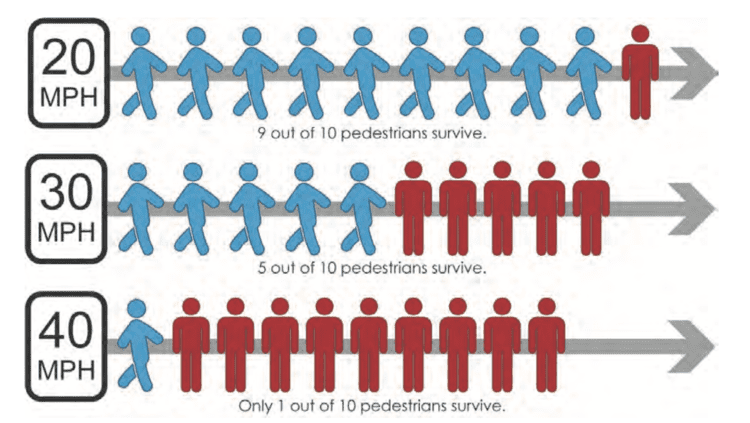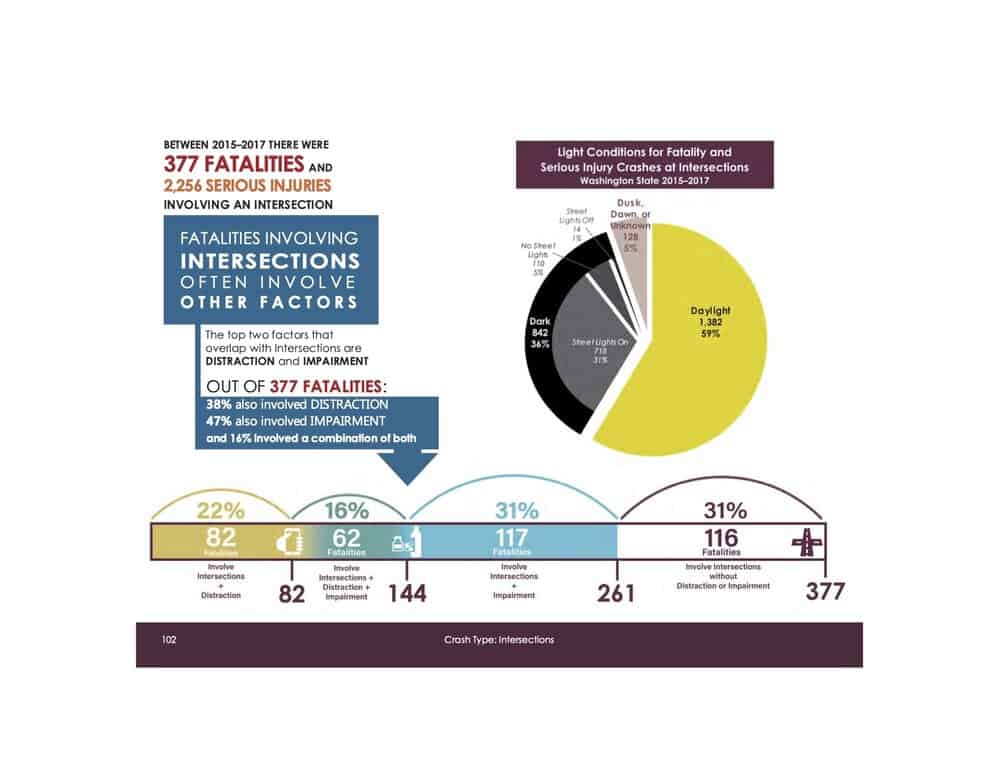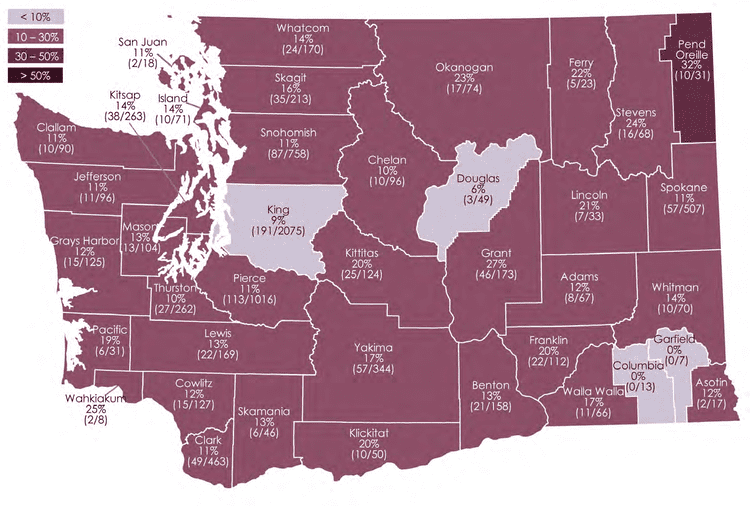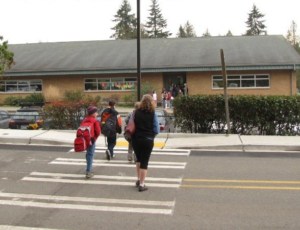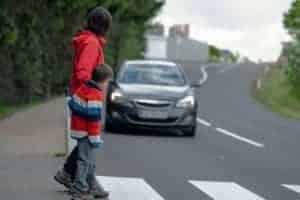Pedestrian Safety Overview
We may be in the midst of a pandemic, but people are still walking places, even if it’s just to the grocery store around the block. And because people will always be out walking, drivers should pay close attention, particularly in areas with heavy pedestrian traffic.
Key Messages
Crossings
Many pedestrian and bicyclist fatalities and serious injuries occur when the walker or bicyclist is crossing the road. Crossings that are appropriately located, designed for context, and ADA-accessible are not available everywhere they are needed, meaning people may cross in conditions that increase their risk of being in a crash.
Whether proceeding straight through an intersection or turning, drivers need to pay special attention at all road crossings for walkers in the roadway. Walkers count on drivers to stop in order to cross the road. Stopping to allow a walker to cross the road may cost you 30 seconds on your drive. But it could make the walker’s day.
Between 2015 and 2017, 54 percent of pedestrian and bicyclist fatalities and serious injuries occurred when the pedestrian or bicyclist was crossing the road.
-
About 67 percent of these pedestrian and bicyclist crossing fatalities and serious injuries occurred at or related to intersections.
-
In 52 percent of these pedestrian and bicyclist crossing fatalities and serious injuries, there were no stop signs or traffic signals requiring motorists to stop. This requires pedestrians and bicyclists to find a gap in the flow of passing drivers in order to cross.
-
In about 35 percent of crossing pedestrian and bicyclist fatalities and serious injuries, there were traffic signals present, and in 5 percent there was a stop sign.
-
In 43 percent of crossing pedestrian and bicyclist fatalities and serious injuries, the pedestrian or bicyclist was using a marked crosswalk.
Speed
Pedestrians and bicyclists who are struck by a motor vehicle are more likely to suffer a fatality or serious injury where drivers are traveling at higher speeds, whether or not the driver is traveling over the posted speed limit.
MORE FACTS ABOUT PEDESTRIAN SAFETY IN WASHINGTON*
Take a look at the following infographic that provides some compelling statistics for increasing pedestrian safety awareness with your audiences. Click here for larger image (https://bit.ly/33Rzu2J).
Here are statistics by county relative to intersection fatalities and serious injuries. Where does YOUR county rank? Click here for a larger image. (https://bit.ly/32TW1N7)
Sample Email & Website Messages
The following are suggested messages that you can tailor to emails messages or post on your website or email to your constituency.
MESSAGE 1:
We can all take steps to improve pedestrian safety when we walk and drive. When driving, slow down and pay extra attention at intersections and crosswalks. When walking, make eye contact with drivers and don’t enter the crosswalk until cars have stopped moving.
MESSAGE 2:
Dark, rainy days make it harder for cars and walkers to see each other. Many thanks to drivers who give walkers the right-of-way and keep their speed down when visibility diminishes.
Washingtonians Walk
-
Nearly all Washingtonians walk daily. Between 25 – 30 percent of the state’s population does not drive and walking is their means of transportation.
-
Pedestrian traffic deaths are on the rise nationally and in Washington.
-
Distraction, speed, impairment, and visibility are all factors in pedestrian deaths.
-
When walking, make eye contact with drivers and don’t enter the crosswalk until cars have stopped moving.
Take Steps for Pedestrian Safety
-
Cross streets at marked crosswalks or intersections. 72 percent of pedestrian fatalities occurred at non-intersections.
-
Bring back the buddy system – help a buddy who can’t walk safely.
-
See and be seen – drivers need to see you to avoid you. Use the crosswalk, make eye contact, wear bright or reflective clothing, and use a light at night.
-
“Plan before you party” works for pedestrians too. If you plan to party, plan to find a ride with a sober driver, spend the night, take a taxi, don’t walk drunk or high. Better to crash on the couch than crash in a crosswalk.
Take Steps for School Children Safety
-
Teach your child(ren) to look both ways when crossing the street and to always use a crosswalk.
-
Make sure they are wearing bright or reflective clothing when walking outside.
-
The best teacher is your behavior – show them how to walk safely.
The following are sample graphics and related content that we encourage you to use on your organization’s social media. Feel free to adapt for use on your website or customized emails too. Please click on the link below each image to download for posting on Facebook and Twitter.
Take steps for safety — give pedestrians the right of way and slow down at night.
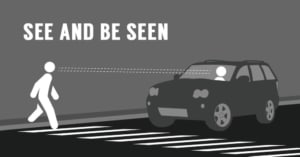
Four in ten pedestrian deaths involve an impaired pedestrian. “Plan before you party” works for walking, too. If you plan to party, plan for a sober ride afterwards.
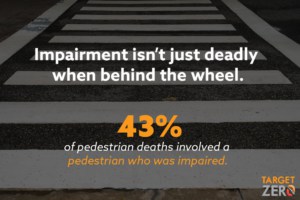
Take Your Turn: Take steps for pedestrian safety.
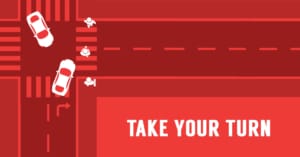
Drive safe for pedestrians. Stop for pedestrians in intersections and crosswalks.
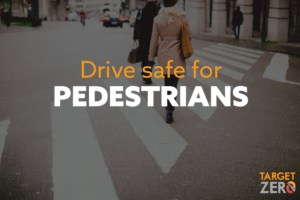
A person driving over 25 mph is less able to see and respond to other road users, which increases the likelihood of a crash.
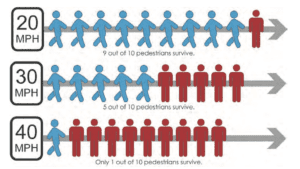
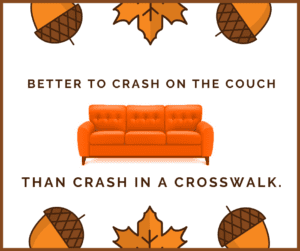
Video Links
Using short videos is a popular way to reinforce messages important to instilling safe driving practices and behavior for our teen drivers. Feel free to embed in your social media posts, email messages, or on your website. (*courtesy of https://www.nhtsa.gov)

